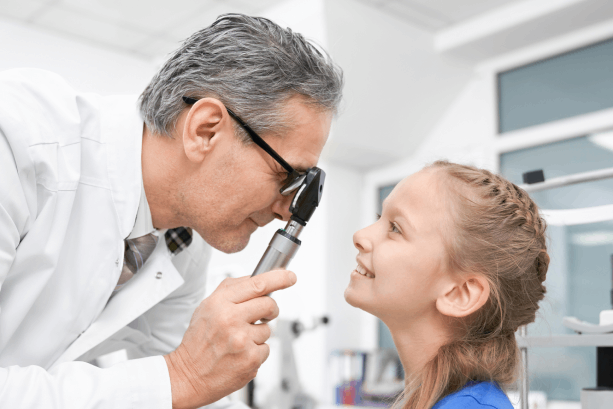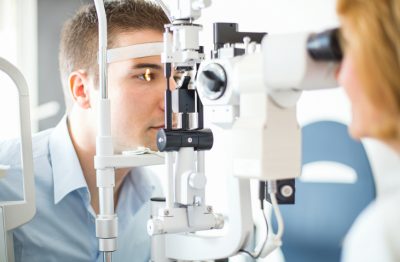The Comprehensive Eye Exam: What to Anticipate Throughout Your Visit to the Eye Physician
A visit to the eye physician for a detailed eye examination is greater than a routine check-up; it is a vital action in guarding your visual wellness. From the initial conversation of your case history to the precision of the visual acuity examination, each component of the examination serves a details objective. What specifically takes place throughout the eye wellness analysis, and just how does it affect the prescription procedure? Understanding these components is vital for those who want to keep optimal eyesight. As we check out each component, the relevance of follow-up referrals will also end up being clear.
Initial Consultation
The preliminary appointment throughout an eye exam acts as a vital structure for understanding an individual's aesthetic health and wellness requirements. This stage sets the tone for the whole examination procedure, allowing the optometrist to collect necessary information concerning the person's clinical background, way of living, and certain vision issues. By meticulously examining any pre-existing problems, drugs, or previous surgeries, the eye care expert can tailor the examination to address private demands efficiently.

In addition, the first assessment is a possibility for patients to voice any concerns or problems, cultivating a joint partnership with their doctor. This interaction not just guarantees that the client really feels educated and comfortable yet likewise empowers them to take part actively in their eye health and wellness management. Collectively, these conversations enable the optometrist to develop an individualized exam strategy, making sure optimal care and precise medical diagnosis.
Aesthetic Skill Test
Kicking off the core components of an eye examination, the visual acuity examination is created to evaluate the intensity and quality of a person's vision. This vital evaluation aids identify just how well an individual can recognize letters or icons at a standardized distance, commonly using a Snellen chart (Eye Doctor Optometrist). The chart comprises rows of letters that reduce in dimension from top to bottom, with the person placed at a customary distance of 20 feet
During the test, the individual is asked to cover one eye and review out loud the tiniest line of letters they can see plainly. This process is duplicated for the other eye. The results are videotaped as a portion, with 20/20 vision suggesting typical aesthetic skill-- where the person can see at 20 feet what a person with normal vision can see at that distance.
The aesthetic skill examination likewise recognizes possible refractive mistakes such as myopia, astigmatism, or hyperopia, which may demand restorative lenses. By developing a baseline of aesthetic performance, the examination is an essential analysis tool that assists the eye care expert in establishing a suitable treatment strategy tailored to the individual's distinct aesthetic needs.
Eye Wellness Analysis
Adhering to the aesthetic skill test, a thorough eye health evaluation is conducted to guarantee the total health of the eyes. This essential sector of the eye test entails a thorough assessment of both the outside and inner structures of the eye.
Via the use of ophthalmoscopy or fundus photography, the retina, optic nerve, and blood vessels are carefully assessed. In several situations, pupil expansion is done to boost visibility of the inner eye structures, although this might result in short-lived light sensitivity for the individual.
In addition, intraocular pressure is gauged to screen for glaucoma threat. This is normally done making use of tonometry, which can detect raised pressure levels that might suggest possible damages to the optic nerve. Jointly, these analyses develop a comprehensive analysis to keep ocular wellness.
Refraction and Prescription
Exactly how does one guarantee ideal vision? An important step lies in the process of refraction and obtaining an exact prescription. Refraction is an advanced treatment carried out by eye care professionals to figure out the precise lens power required to correct refractive errors such as myopia, astigmatism, presbyopia, and hyperopia. The goal of this procedure is to analyze exactly how light bends as it goes through the eye, permitting the professional to establish whether restorative lenses are required for improved aesthetic skill.
Throughout the refraction process, the patient is asked to browse a phoropter, a device that consists of various lenses. The practitioner will systematically change these lenses and ask the client to contrast clearness in between options until the ideal feasible vision is attained. This procedure is essential in crafting a precise prescription that specifies the appropriate lens power for glasses or get in touch with lenses.
The prescription originated from this procedure not just optimizes vision yet More hints also serves as a structure for picking suitable rehabilitative eyeglasses. It is necessary to make certain that prescriptions are routinely updated, as changes in vision can occur over time, emphasizing the value of regular eye examinations. This meticulous interest to detail aids preserve clear, comfy vision in everyday life.
Follow-Up Recommendations

Throughout a follow-up browse through, the eye physician will perform a collection of tests to examine aesthetic acuity and check for any type of modifications in vision that may demand an update to the prescription. Additionally, the follow-up gives a chance to discuss any discomfort or problems experienced with existing glasses. Adjustments can be made to make certain convenience and effectiveness, whether via lens modification or frame changes.
For people with recurring problems such as glaucoma, diabetes-related eye issues, or macular deterioration, more constant follow-ups may be necessary. These appointments are vital for handling and possibly reducing the development of eye disease. Sticking to these recommendations can substantially contribute to maintaining aesthetic health and protecting against long-term problems.
Conclusion
The comprehensive eye examination is an essential process for preserving visual wellness, incorporating an in-depth evaluation of case history and vision issues. Key elements include the aesthetic skill test, which reviews sight clarity, and the eye health and wellness evaluation, which examines the general condition of the eyes. Refraction tests aid figure out the exact lens prescription essential for optimum vision improvement. Follow-up recommendations give support for recurring eye care, guaranteeing that any type of possible issues are dealt with quickly and effectively.
A visit to the eye doctor for a detailed eye test is even more than a regular check-up; it is an important step in safeguarding your visual health and wellness.Kicking off the core parts of an eye evaluation, the visual acuity test is designed to assess the sharpness and redirected here clearness of a client's vision.Adhering to the aesthetic skill test, a detailed eye health and wellness evaluation is performed to ensure the general wellness of the eyes. These check outs allow the eye care specialist to keep an eye on changes in vision, update prescriptions, and analyze the total health and wellness of the eyes. Secret elements include the aesthetic acuity test, which evaluates vision quality, and the eye health and wellness assessment, which checks out the general condition of the eyes.